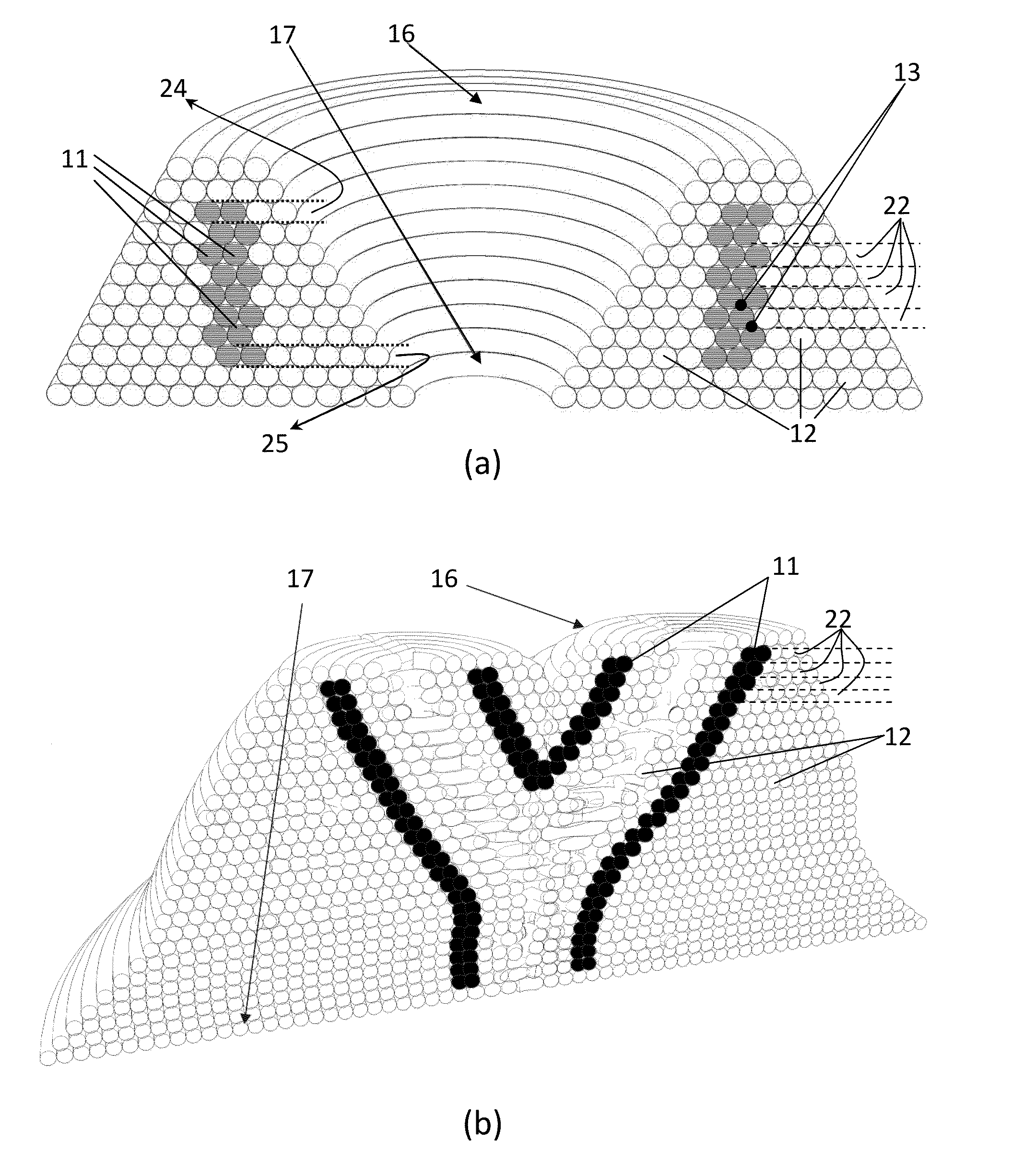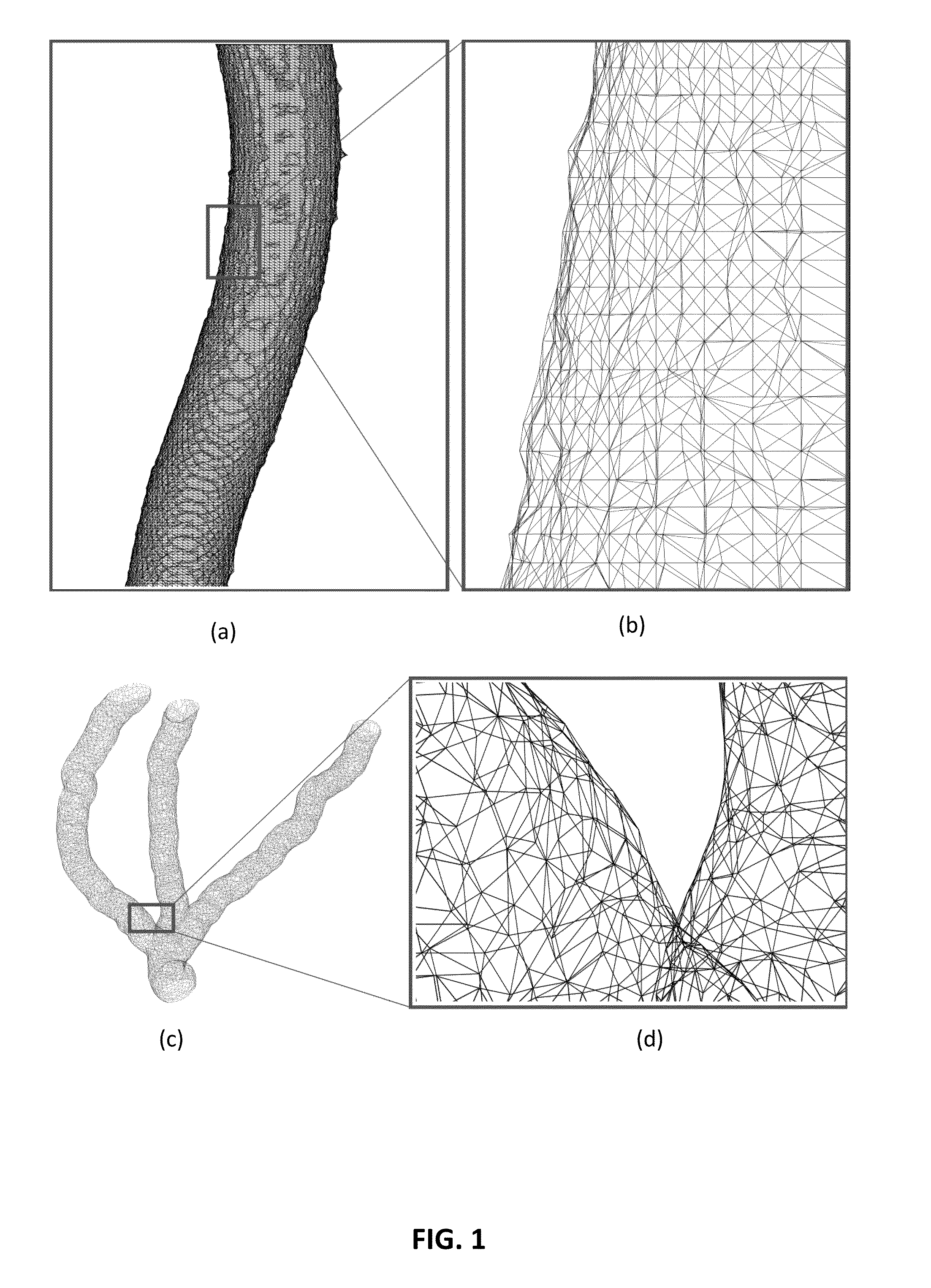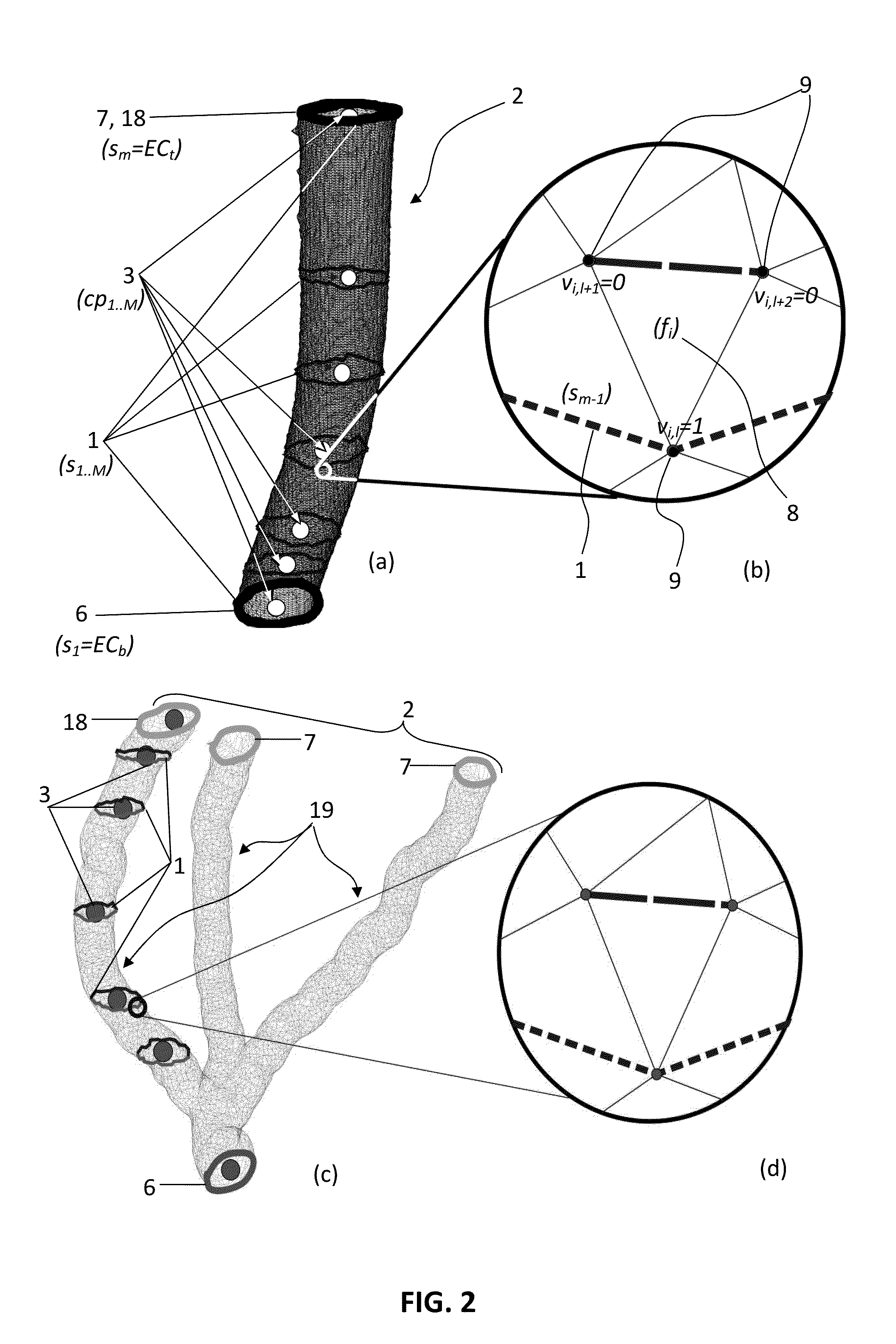Artificial hollow biological tissue network and method for preparation thereof
a hollow biological tissue and hollow technology, applied in biochemistry apparatus, analogue and hybrid computing, medical simulation, etc., can solve the problems of immunogenic and unexpected side effects, death worldwide, and inability to extract an autograft, and achieve high reproducibility
- Summary
- Abstract
- Description
- Claims
- Application Information
AI Technical Summary
Benefits of technology
Problems solved by technology
Method used
Image
Examples
Embodiment Construction
[0027]Referring now to the figures outlined above, the present invention proposes a self-supporting scaffold-free artificial hollow biological tissue network (also named as ‘network’ hereafter) explained in claim 1, which overcomes the above-mentioned shortcomings of the prior art. Said network (100) is shaped as a self-supporting three-dimensional (3D) bioprinted structure which is built from continuous longitudinal (e.g. cylindrical) multicellular aggregates of living cells, without employing any non-biological material e.g. scaffold remaining in contact with said network after implantation to a patient.
[0028]The term ‘self-supporting’ here means that the network (100) is supported by a removable plurality of support structures (12) as explained in this text, until the completion of the maturation process of said network, and after removal of support structures (12) the network (100) mainly comprises living cells fused and adhered in accordance with their natural abilities, which ...
PUM
 Login to View More
Login to View More Abstract
Description
Claims
Application Information
 Login to View More
Login to View More - R&D
- Intellectual Property
- Life Sciences
- Materials
- Tech Scout
- Unparalleled Data Quality
- Higher Quality Content
- 60% Fewer Hallucinations
Browse by: Latest US Patents, China's latest patents, Technical Efficacy Thesaurus, Application Domain, Technology Topic, Popular Technical Reports.
© 2025 PatSnap. All rights reserved.Legal|Privacy policy|Modern Slavery Act Transparency Statement|Sitemap|About US| Contact US: help@patsnap.com



